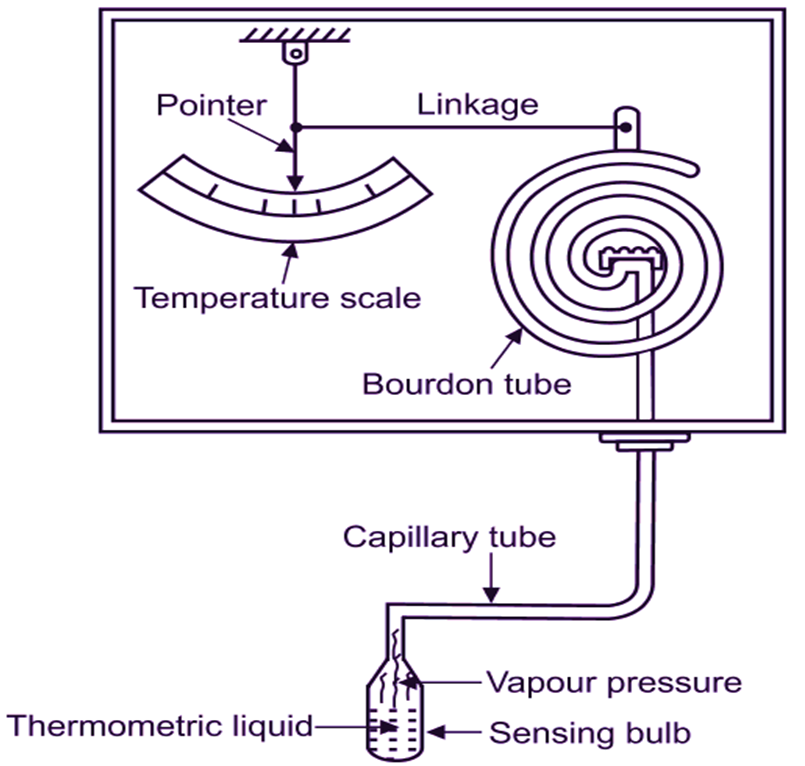Operating Range: with SO2 (30°C to 120°C).
Working principle of Vapour Pressure Thermometer
“Vapour pressure of a liquid depends upon the temperature. If this liquid is partially filled in an enclosed chamber, it will create a definite vapour pressure, by which, temperature can be measured”. Working of Vapour pressure thermometer is similar to liquid filled thermometer.
Construction & Working of Vapour Pressure Thermometer
Vapour pressure thermometer consists of a partially filled bulb (Fig. 1). This bulb is used as sensing element to measure temperature. When bulb senses the temperature, vapour will be formed above the liquid level inside bulb. This vapour will pass through a capillary tube, and then to a bourdon tube (receiving element). Pressure of vapour formed causes the free end of bourdon tube to deflect. This deflection is transmitted by mechanical arrangement, causing the pointer to move over calibrated scale to give reading of measured temperature.

Fig. 1: Vapour Pressure Thermometer
Advantages of Vapour Pressure Thermometer
- Rigid in construction.
- Versatility.
- Economical.
- Easy to read from a remote distance.
- Good response and sensitivity.
Disadvantages of Vapour Pressure Thermometer
Use of vapour pressure thermometer is limited due to availability of number of liquids, which can provide suitable vapour pressure ranges.
Applications of Vapour Pressure Thermometer
- Industrial temperature measurements.
- Commercial applications.
Reasons of Static Errors in Pressure Thermometers
- Improper location of bulb.
- Incorrect immersion of bulb.
- Change in ambient pressure.
- Change in ambient temperature.